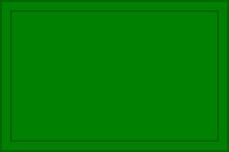Type InfantryArmoured | Allegiance Queen Elizabeth II | |
 | ||
Active 1916–19191940–19462013–present Branch Canadian Expeditionary Force Land Force Command Canadian Army | ||
The 4th Canadian Division is a formation of the Canadian Army. The division was first created as a formation of the Canadian Corps during the First World War. During the Second World War the division was reactivated as the 4th Canadian Infantry Division in 1941 and then converted to armour and redesignated as the 4th Canadian (Armoured) Division. Beginning in 1916 the division adopted a distinctive green-coloured formation patch as its insignia. In 2013 it was announced that Land Force Central Area would be redesignated 4th Canadian Division. It is currently responsible for Canadian Army operations in the Canadian province of Ontario and is headquartered at Denison Armoury.
Contents
First World War
The 4th Canadian Division was formed in the Britain in April 1916 from several existing units and others scheduled to arrive shortly thereafter. Under the command of Major-General David Watson, the Division embarked for France in August of that year where they served both in the Western Front in France and in Flanders until Armistice Day. The 4th Canadian Division was a part of the Canadian Corps in the Battle of Vimy Ridge, which attacked and defeated the Germans, driving them from the ridge. As a result, the Canadians became known as masters of offensive warfare and an elite fighting force.
In the Battle of Vimy Ridge in April 1917, the 4th Canadian Division was given the job of capturing Hill 145, the highest and most important feature of Vimy Ridge. However, when they attempted to capture the hill, they were hampered by fire from the "Pimple", which was the other prominent height at Vimy Ridge. To capture Hill 145, forces which were supposed to attack the Pimple were redeployed and captured Hill 145.
Infantry Units
10th Canadian Brigade:
11th Canadian Brigade:
12th Canadian Brigade:
Pioneers:
Battles and Engagements on the Western Front
1916:
1917:
1918:
4th Canadian (Armoured) Division
The 4th Canadian (Armoured) Division was created during World War II by the conversion of the 4th Canadian Infantry Division at the beginning of 1942 in Canada. The division proceeded overseas in 1942, with its two main convoys reaching the United Kingdom in August and October.
The division spent almost two years training in the United Kingdom before crossing to Normandy in July 1944. In the United Kingdom, it participated in war games together with the Polish 1st Armoured Division, and later fought in France, the Low Countries, and Germany, both divisions followed very close paths. The division participated in the later stages of the Battle of Normandy at the Falaise Pocket, the advance from Normandy and spent almost two months engaged at the Breskens Pocket. It wintered in the Netherlands and took part in the final advance across northern Germany.
Formation
1944–1945
David Vivian Currie VC
David Vivian Currie VC was awarded the Victoria Cross for his actions in command of a battle group of tanks from The South Alberta Regiment, artillery, and infantry of the Argyll and Sutherland Highlanders of Canada at St. Lambert-sur-Dives, during the final actions to close the Falaise Gap. This was the only Victoria Cross awarded to a Canadian soldier during the Normandy campaign (from 6 June 1944 to the end of August 1944), and the only VC ever awarded to a member of the Royal Canadian Armoured Corps.
The then 32 year-old Currie was a Major in The South Alberta Regiment. During the Battle of Falaise, Normandy, between 18–20 August 1944, Currie was in command of a small mixed force of tanks, self-propelled anti-tank guns and infantry which had been ordered to cut off one of the Germans' main escape routes.
After Currie led the attack on the village of St. Lambert-sur-Dives and consolidated a position halfway inside it, he repulsed repeated enemy attacks over the next day and a half. Despite heavy casualties, Major Currie's command destroyed seven enemy tanks, twelve 88 mm guns and 40 vehicles, which led to the deaths of 300 German soldiers, 500 wounded and 1,100 captured. The remnants of two German armies were denied an escape route.
Land Force Central Area and 2013 reactivation
The LFCA was created on 1 September 1991, taking command of what was previously Central Militia Area and the Regular Force Army units and formations in Ontario from the northern Lakehead region to the border with Quebec. At that point in time, the six subordinate militia districts were reorganized into four: Northern Ontario District, London District, Toronto District, and Ottawa District each one garrisoned by a brigade of militia troops and a small number of regular support staff. Later that decade, in 1997, the four reserve force districts were again reorganized into three brigade groups.
At the time of its creation in the early-1990s, it was housed on the grounds of the former base and subsequently moved ca 1993 to the Place Nouveau office tower at Yonge Street north of Finch Avenue; this was controversial as the offices of the area commander, Major-General Brian Vernon, were lavishly renovated, attracting political criticism and attention from the Auditor General of Canada.
In 2013, the LFCA was renamed the "4th Canadian Division". With this change of name, the formation was also granted the identifying patch and historical lineage of the division that fought in the two world wars.
4th Canadian Division current organization
2 Canadian Mechanized Brigade Group
*2nd Battalion, The Royal Canadian Regiment is stationed at Gagetown, which falls under the administration of Land Force Atlantic Area
Units
Branches
